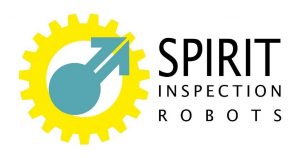PROFACTOR: EU project to develop the future of inspection robots
A research project worth 4 million € together with FACC, voestalpine Boehler Aerospace and Centro Ricerche Fiat
STEYR. The research center PROFACTOR has been awarded a 3-year resarch project called SPIRIT. Together with 8 partners from science and industry, including FACC, voestalpine Böhler Aerospace and Centro Ricerche Fiat, a new generation of inspection robots is to be developed. These robots will be used for very different inspection tasks in industry – without programming.
“The goal of the project is to get rid of time-consuming and expensive programming tasks and instead to just configure the inspection process for the machine“, says Christian Eitzinger, head of the machine vision department at PROFACTOR. The research organization has long-lasting experience in industrial machine vision and robotics and in a long-term research program Profactor focused on the integration of these two topics. This included e.g. the project “ThermoBot” that aimed at the thermographic crack detection in forged parts, such as crank shafts. The main challenge when inspecting parts of complex shape is to plan the motion of the robot in such a way that the surface is fully inspected.
Path planning depends on inspection technology
Planning of an inspection path highly depends on the particular inspection technology. Eitzinger: “For thermography we need to take the time for heat dissipation into account, while no such restrictions exist e.g. for X-ray inspection. In that case, however, an emitter and a detector need to be independently positioned on opposite side of the part.”
SPIRIT aims at the “universal inspection machine”
SPIRIT aims at the development of inspection robots that can deal with a wide range of inspection technologies, including surface inspection by machine vision, thermography for crack detection, X-ray inspection or 3D sensors for assembly checks. Eitzinger: “We are developing a software framework that can automatically plan an inspection path for all these different inspection technologies”. The inspection robot will just need a CAD model of the workcell – to avoid collisions – and a model of the part to be inspected. Given this information it will take the selected inspection technology into account and automatically generate an inspection program for the particular task.
At Centro Ricerche Fiat e.g. the robot will be used to inspect a part on the conveyor while it is moving. In this case the presence and correct mounting of plugs, cables and hoses needs to be verified by the robot.
Reactive Planning
As an additional feature the robot will have the capability to optimize the inspection process in real-time while it is running. This is necessary in the case of e.g. unknown deformations that are not accurately represented in the CAD model. Or in the case of X-Ray inspection the sensor needs to be adjusted to the orientation of the honeycomb core in a composite part.
Technology for SMEs
The end users in the project are large, well-known companies, but also small and medium size enterprises will benefit from the results, either by using the inspection robot for quality control of small lot sizes or – in the case of machine builders – by using the software framework for an easy deployment of the technology at end users.
Project data
Akronym: SPIRIT
Project name: A software framework for the efficient setup of industrial inspection robots
Project partners:
Profactor GmbH
IT+Robotics SRL
Marposs S.pA.
InfraTec Infrarotmeßtechnik GmbH
Università Degli Studi di Padova
Centro Ricerche FIAT SCPA
voestalpine BÖHLER aerospace GmbH & Co KG
FACC Operations GmbH
Duration: 01.01.2018 – 28.02.2021
Project budget: 3,732 M€
Website: http://spirit-h2020.eu/
 This project has received funding from the European Union’s Horizon 2020 research and innovation programme under grant agreement No. 779431.
This project has received funding from the European Union’s Horizon 2020 research and innovation programme under grant agreement No. 779431.
The proposal phase for the project was supported by the State of Upper Austria within the framework of “Expanding Horizon”.


